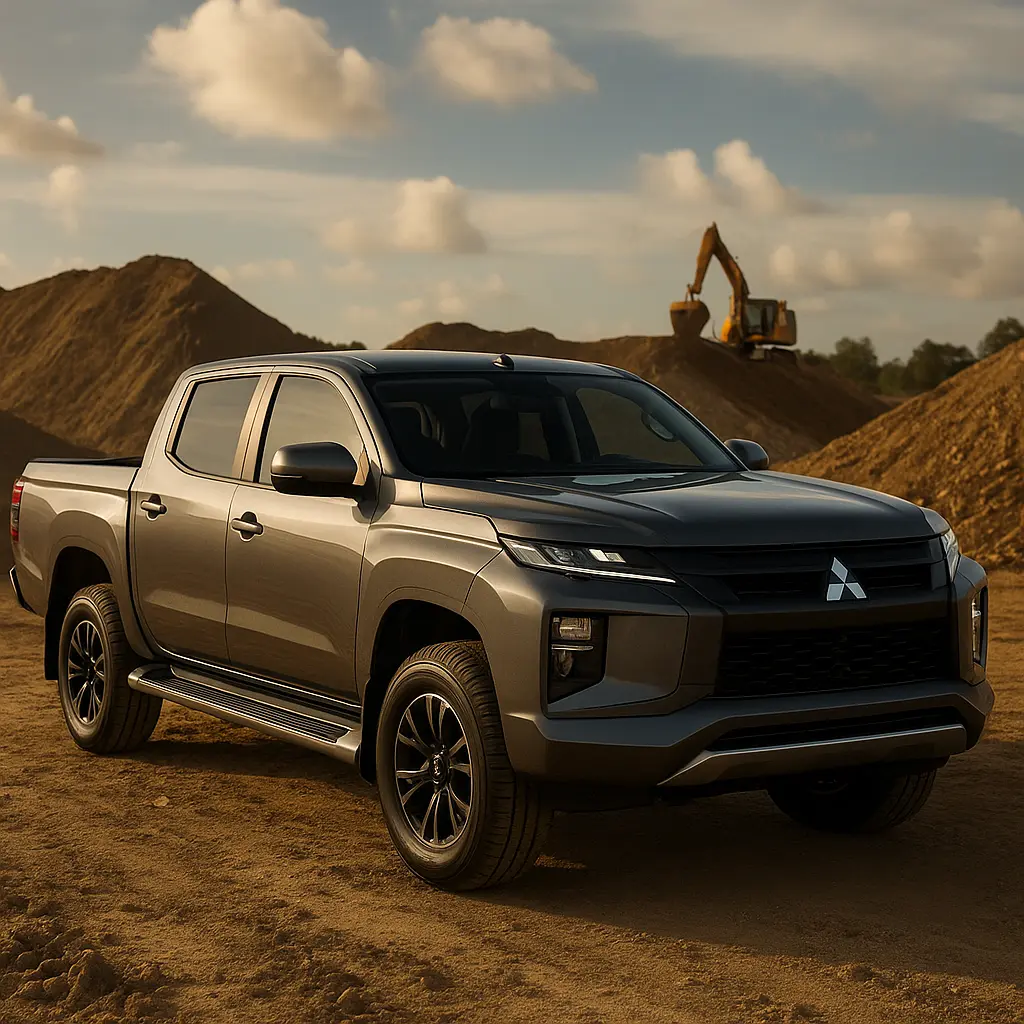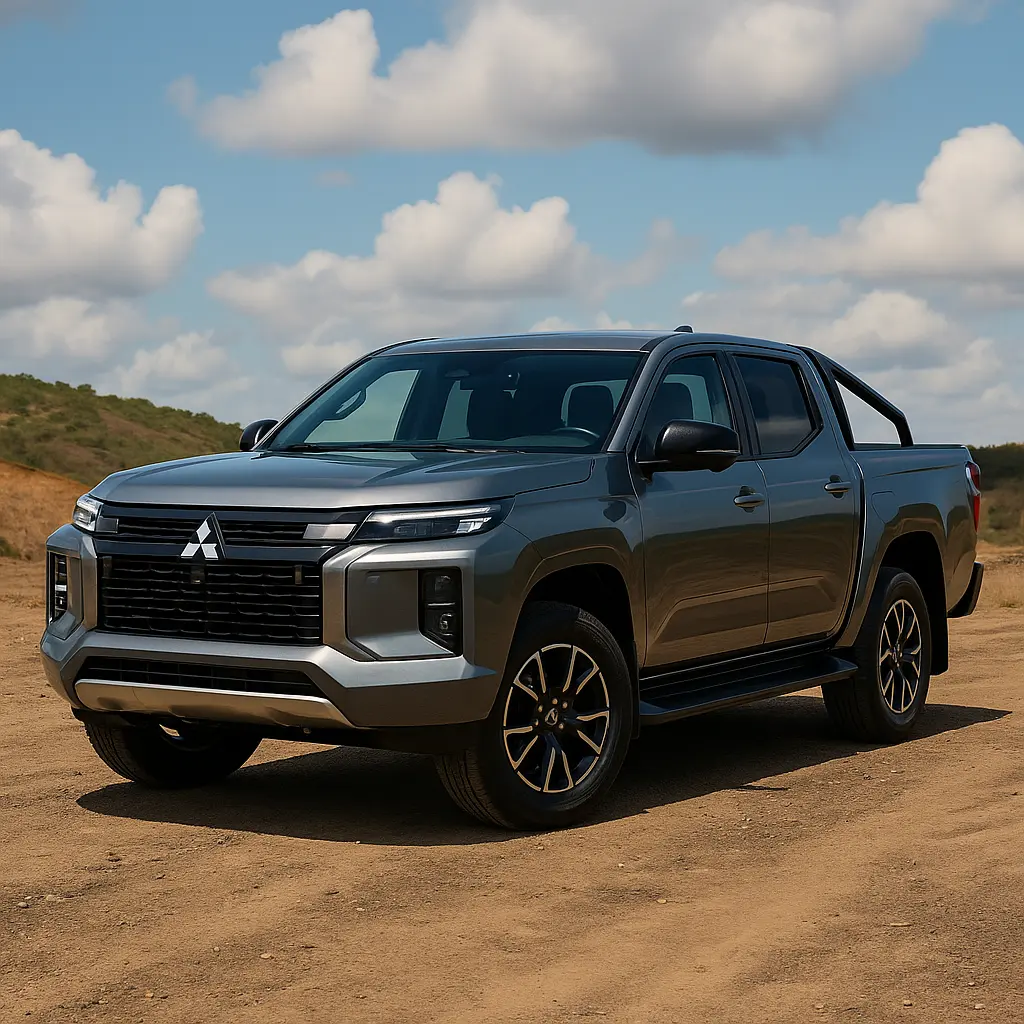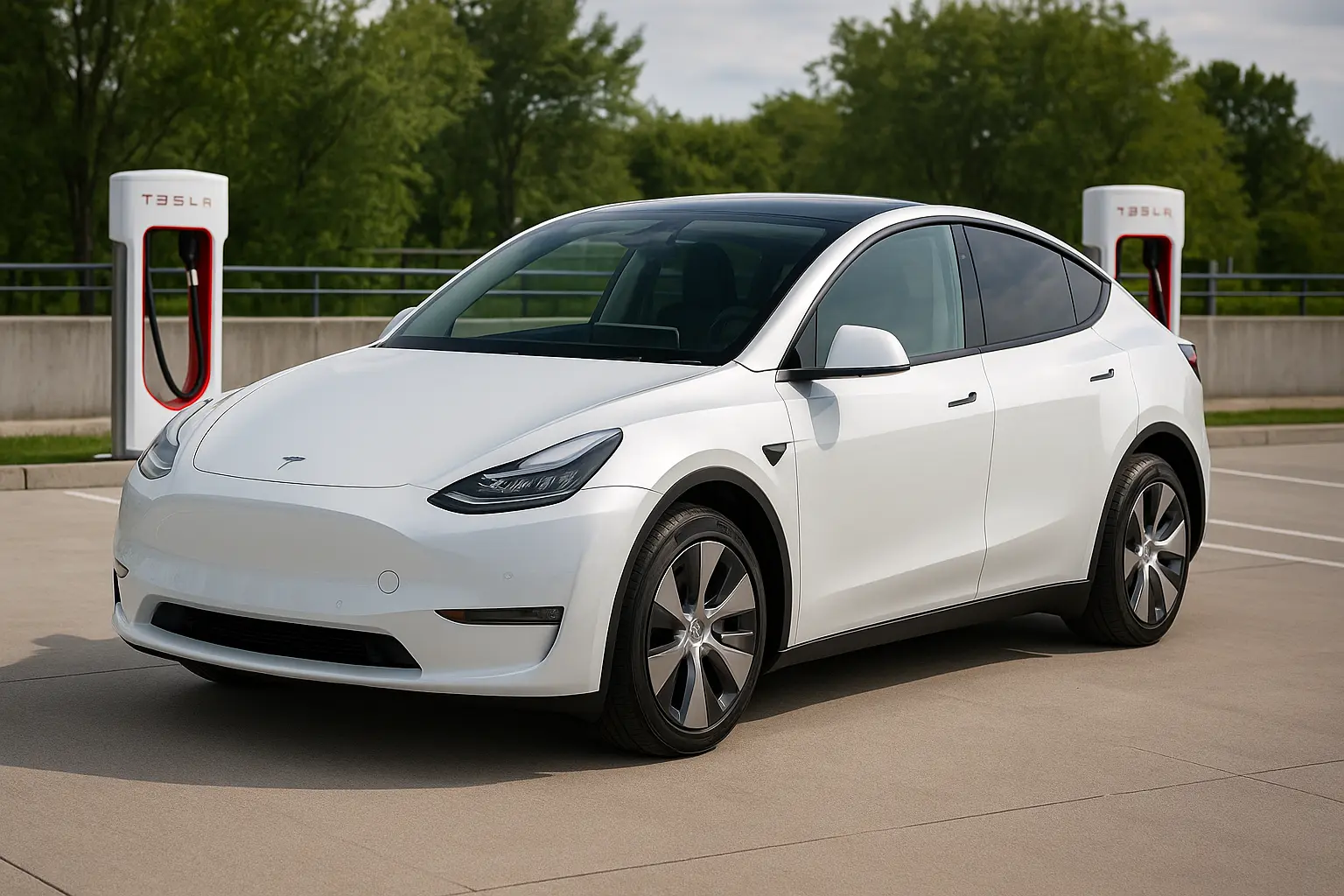When you think of Australia’s toughest worksites, farms, and long road trips across the Outback, the Mitsubishi Triton has always been part of the conversation. Known for its durability, value, and no-nonsense approach, the Triton has built a loyal fan base over the decades. For 2025, Mitsubishi has gone all-in, launching a fully redesigned Triton that’s bigger, stronger, safer, and packed with modern tech.
But in a market dominated by heavyweights like the Toyota HiLux, Ford Ranger, and Isuzu D-MAX, the Triton needs to prove that it can do more than just hold its ground. With Aussies demanding more comfort, better towing, and improved safety, Mitsubishi has engineered the 2025 Triton to be a serious contender.
This deep-dive review explores the design, performance, features, towing ability, safety credentials, and whether the new Triton really is the all-rounder Australian tradies and families have been waiting for.

Exterior Design: Muscular and Modern
Mitsubishi has left no stone unturned in re-shaping the Triton. Compared to its predecessor, the 2025 model is longer, wider, and rides on a sturdier ladder-frame chassis. The front end adopts Mitsubishi’s “Dynamic Shield” design philosophy, with a bold grille, C-shaped LED daytime running lights, and a wider stance that makes the ute look imposing both on city streets and rural worksites.
From the side profile, the new Triton’s squared wheel arches, higher beltline, and strong shoulder creases communicate toughness. The rear tray has been redesigned for more space and better load access, while higher-spec models get premium touches such as 18-inch alloy wheels and chrome accents.
For those who rely on their ute after hours, Mitsubishi has improved practicality with features like integrated tray lighting, a more accessible tailgate, and optional sports bars. The 2025 Triton doesn’t just look rugged; it’s engineered to meet the demands of Aussie conditions.
Interior: Comfort Meets Practicality
Step inside the 2025 Triton, and it’s clear Mitsubishi has upped its game. The cabin no longer feels stripped down or dated compared to rivals. Instead, it strikes a balance between durability and modern comfort.
Hard-wearing materials are used where they matter—such as door cards and lower dash panels—while higher trims bring soft-touch surfaces, leather-appointed seats, and contrast stitching. The dual-cab variants now offer more legroom in the rear, addressing one of the biggest complaints about older Tritons.
At the centre of the dash sits a new 10-inch infotainment display with wireless Apple CarPlay and Android Auto, backed by a 7-inch digital driver display. Higher models add premium sound systems, climate control, and multiple USB-C charging ports. Storage is plentiful too, with deep cupholders, door bins, and under-seat compartments.
The Triton’s interior won’t outclass luxury SUVs, but it delivers what tradies, families, and adventure seekers need: durability, smart storage, and just enough tech to keep everyone connected.
Engine and Performance: Diesel Power for Aussie Roads
The heart of the 2025 Mitsubishi Triton is its new 2.4-litre bi-turbo diesel engine, producing 150kW of power and 470Nm of torque. This is a significant jump from the outgoing model and brings the Triton closer to rivals like the Ford Ranger and Toyota HiLux.
Matched to a 6-speed automatic transmission, the engine delivers smoother acceleration and better pulling power. For those who need off-road strength, Mitsubishi’s renowned Super Select 4WD-II system is standard on higher trims, allowing drivers to switch seamlessly between 2H, 4H, 4HLC, and 4LLC modes depending on terrain.
Fuel efficiency is rated at around 8.5L/100km, which, while not groundbreaking, is respectable for a dual-cab ute of this size. Mitsubishi has also tuned the suspension for a more stable ride, whether you’re carrying a full tray load or cruising on the highway.
Towing and Payload: Built for Work
One of the most important aspects of any ute in Australia is its towing and payload ability. The 2025 Triton now offers a 3,500kg braked towing capacity—finally matching key rivals. This makes it more versatile for towing boats, caravans, or heavy trailers.
The payload capacity is also improved, sitting at just over 1,000kg, meaning the Triton can still carry a full tray of tools, machinery, or building supplies without breaking a sweat. Mitsubishi has upgraded the ladder frame chassis and rear suspension to handle heavier loads with confidence.
For tradies, this means the Triton is finally ticking the boxes that previously made them turn to the HiLux or Ranger.
Off-Road Capability: Ready for the Bush
The Triton has always had a reputation for being a rugged, go-anywhere ute, and the 2025 model continues that tradition. Ground clearance has been increased to around 220mm, while approach, departure, and breakover angles have been improved for better off-road geometry.
Mitsubishi’s Super Select 4WD-II system comes with a locking rear differential, hill descent control, and multiple terrain modes (gravel, sand, mud, snow). Whether you’re heading into the bush, tackling mining roads, or hitting the beach, the Triton now feels more capable and confidence-inspiring.
Importantly, Mitsubishi has reinforced underbody protection, a key consideration for Aussies who regularly drive on rugged terrain.
Safety: A Big Step Forward
Mitsubishi has invested heavily in making the Triton one of the safest utes on sale. Standard across the range is Mitsubishi’s Advanced Driver Assistance System (ADAS), which includes:
Autonomous Emergency Braking with pedestrian and cyclist detection
Adaptive Cruise Control
Lane Departure Warning and Lane Keep Assist
Blind Spot Monitoring
Rear Cross-Traffic Alert
Driver Attention Monitoring
The Triton also comes with up to 9 airbags in higher trims, offering comprehensive protection for all occupants. With these updates, the 2025 Triton is expected to achieve a 5-star ANCAP safety rating, giving tradies and families added peace of mind.
Technology and Features: Smarter Than Before
Utes are no longer just workhorses—they’re lifestyle vehicles too. The 2025 Triton reflects this shift with upgraded tech. Beyond the 10-inch touchscreen and wireless smartphone connectivity, buyers can enjoy features such as:
Keyless entry and push-button start
Dual-zone climate control
360-degree camera for parking and tight worksites
Wireless charging pad
Advanced voice recognition
For those who like customisation, Mitsubishi also offers a wide range of genuine accessories, from nudge bars and roof racks to tray liners and tow kits.
Variants and Pricing: Something for Everyone
Mitsubishi has confirmed that the 2025 Triton will be available in multiple body styles and trims, including:
GLX Single Cab – Worksite focused, no-frills durability
GLX+ and GLS Dual Cab – Balance of practicality and comfort
GSR Dual Cab – Flagship variant with premium touches
Pricing is expected to start from around $38,000 drive-away for entry models and stretch beyond $65,000 for fully loaded dual-cab 4x4s. This positions the Triton competitively against the HiLux, Ranger, and Isuzu D-MAX, while still maintaining Mitsubishi’s value-for-money reputation.
Ownership, Warranty, and Running Costs
Mitsubishi continues to lead in aftersales care, offering Australia’s longest standard warranty at 10 years/200,000km (conditional upon servicing with Mitsubishi). This is a massive selling point for tradies and families who want long-term peace of mind.
Servicing intervals remain at 12 months or 15,000km, and Mitsubishi’s capped-price servicing program keeps running costs predictable. Combined with respectable fuel economy, the Triton remains one of the more affordable dual-cabs to own over the long term.
Competition: Where the Triton Stands
The 2025 Triton enters one of the most competitive markets in Australia. Here’s how it stacks up:
Toyota HiLux – Legendary reliability, but higher price.
Ford Ranger – Class-leading tech and performance, but expensive servicing.
Isuzu D-MAX – Strong towing and safety, but less refined interior.
Mazda BT-50 – Stylish and capable, but pricier.
The Triton’s advantage lies in its value, long warranty, and balance between workhorse capability and modern features. While it may not beat the Ranger in sheer performance or the HiLux in badge loyalty, it’s now a genuine top-tier choice.
Verdict: A Ute That Finally Delivers
The 2025 Mitsubishi Triton is not just a facelift—it’s a complete transformation. Mitsubishi has taken customer feedback seriously and delivered a ute that finally matches the demands of Australian buyers. From improved towing and off-road ability to a safer, smarter, and more comfortable cabin, the Triton is now a ute you buy with both your head and heart.
For tradies who need a reliable workmate, families looking for a versatile dual-cab, or adventurers heading off-road, the 2025 Triton proves that it’s more than ready for the job.
Final Thoughts
Mitsubishi has done what many thought unlikely—brought the Triton into the same conversation as the HiLux and Ranger without compromising on affordability. Backed by a 10-year warranty, strong features list, and tougher design, the 2025 Triton is set to become a serious favourite on Aussie roads and worksites.
If you’re in the market for a new ute in 2025, the Mitsubishi Triton deserves to be at the top of your test-drive list.
Leave a comment
Your email address will not be published. Required fields are marked *




















